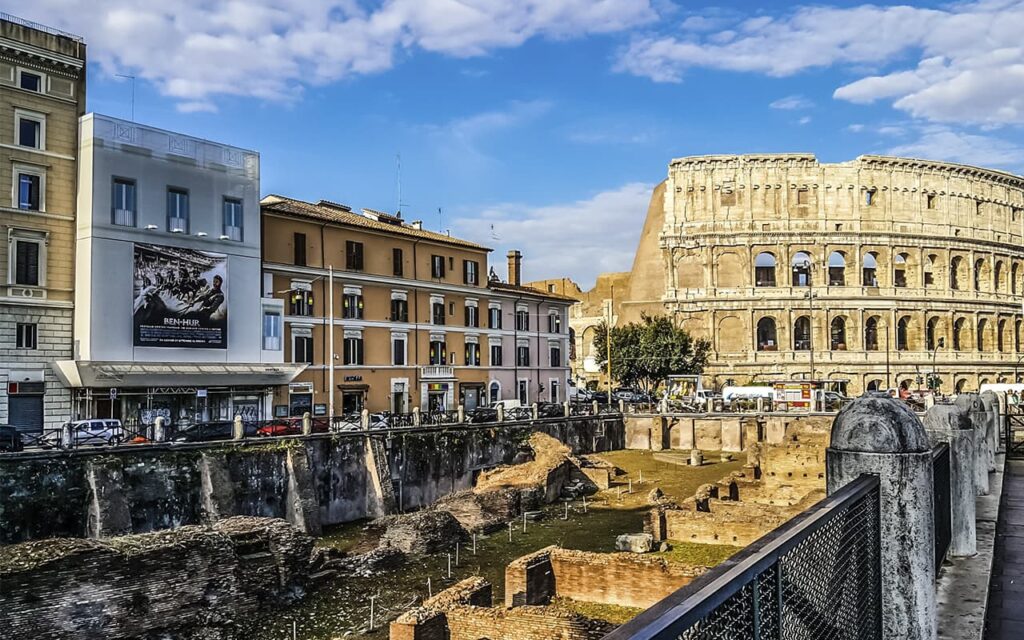There are so many monuments in Europe that it is difficult to single out the most significant ones. Some people are more interested in ancient monuments. Some people prefer to visit modern sights. There are several dozen architectural monuments in European cities that are included in the UNESCO World Heritage List. The article describes the most famous and visited ones.
The Colosseum
The construction of this gigantic building, located in the Italian capital, began in 72, and it lasted eight years. Like other Roman amphitheaters, the Colosseum is an ellipse with an arena in the middle. This European monument is distinguished from all similar structures by its size. The walls of the Colosseum are made of large marble. Ancient craftsmen used tuff as a finishing material.
Today the Colosseum is under the protection of the Italian government. In the XX century, excavations were carried out under the arena, during which archaeologists discovered basements.
Biskupino settlement
In the 1930s, not far from the town of Gnezno, archaeologists discovered the remains of a large settlement. Thanks to the preservative effect of lake silt, not only parts of wooden structures have been preserved, but also many objects. This gave scientists a unique opportunity to restore the settlement in its original form. The discovery caused a sensation in the scientific world.
Every year in the summer, an archaeological festival is held on the territory of the former settlement, which gathers thousands of participants. Today, Biskupin is a famous open-air museum and one of the most famous attractions in Eastern Europe. Thanks to the work of archaeologists, tourists have the opportunity to stroll through the ancient streets and even enter ancient houses.
Leaning Tower of Pisa
The bell tower was built in two stages with a break of one hundred years. Construction began in 1173. By that time, the ensemble of the square, Piazza dei Miracoli, had already practically formed. Almost 100 years later, three more tiers with loggias and galleries appeared, bringing the total height of the tower to 48 meters.
In 2008, experts announced that the Leaning Tower of Pisa had stopped falling. This was preceded by a number of complex measures. The condition of the famous bell tower is under the control of scientists. Since 1987, the complex has been included in the UNESCO World Heritage List.
St. Paul’s Cathedral
This is one of the largest composite structures in the Christian world. largest composite structures in the Christian world, the residence of the Bishop of London. The cathedral is located on Ludgate Hill in the center of the City. One of the main attractions of the temple is the Whispering Gallery, located in the inner part of the dome at a height of 55 meters. Here you can observe a unique acoustic effect: if you say a word while facing the wall at one end of the gallery, it will be heard at the other end but not in the center. In addition, the gallery offers eight magnificent frescoes by James Thornhill depicting scenes from the life of St. Paul.
Charles Bridge
The old crossing of the Vltava River is recognized worldwide as an engineering and artistic masterpiece of the Gothic style. It is the oldest bridge in the Czech capital. It is decorated with thirty Baroque sculptures.
The first stone in the foundation of the stone structure was laid personally by Charles IV. For almost 5 centuries, this bridge remained the only one in Prague. It was only in the thirties of the nineteenth century that other crossings of the Vltava began to be built.
Humanity has built thousands of bridges. However, some of them are important monuments of their eras, which travelers from all over the world want to see. Prague’s Charles Bridge is one of these mysterious echoes of the Middle Ages.
Notre Dame Cathedral
This temple is a masterpiece of early French Gothic, the spiritual heart and business card of Paris. It is located in the historic center of the city on the island of Cité. Construction of the cathedral began in the XII century on the site of the Church of St. Etienne. The initiator was the bishop of Paris. The first stone was laid by Pope Alexander III in 1163.
Notre Dame Cathedral symbolizes the zero kilometer, where all the roads converge, rays scattering from Paris.
